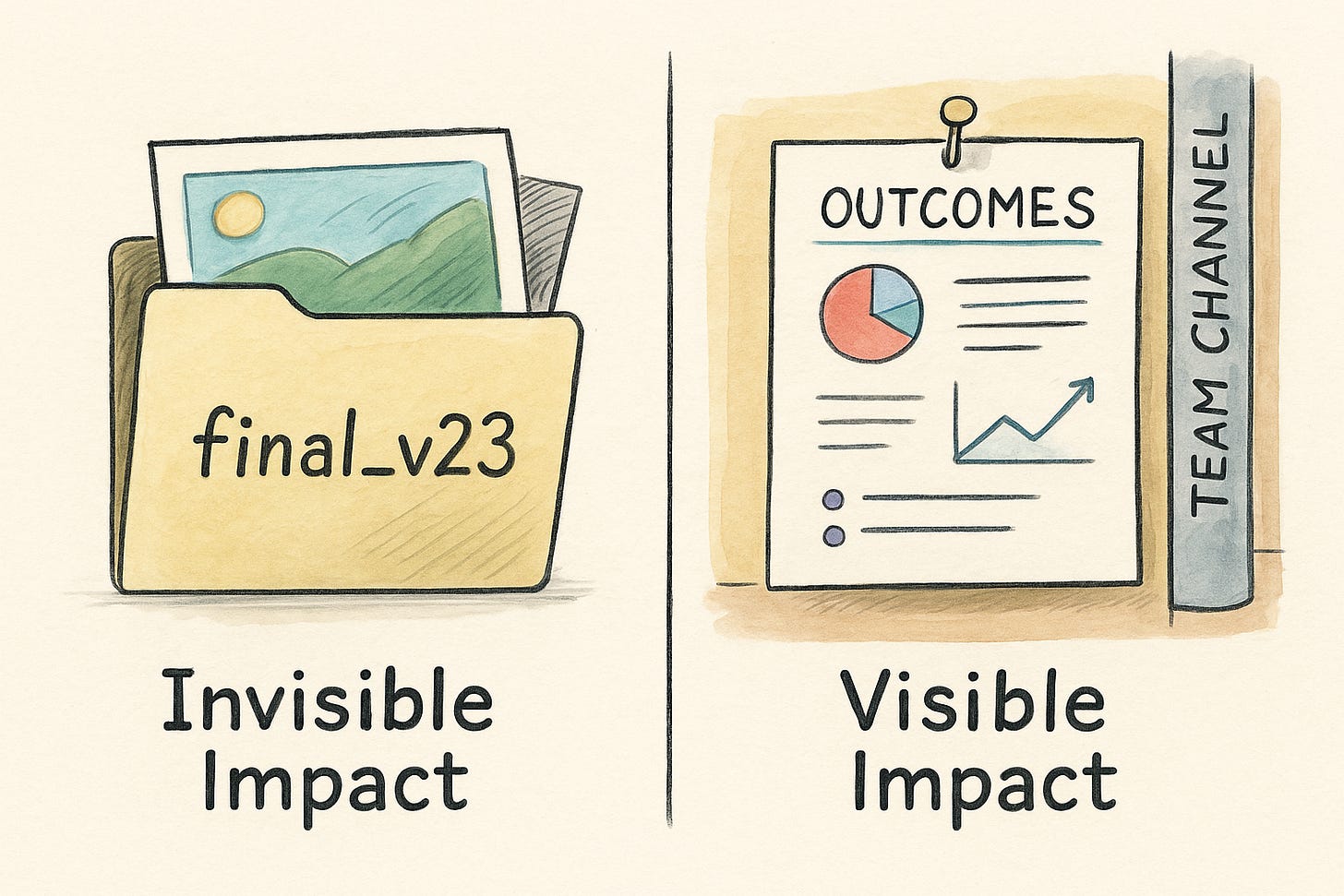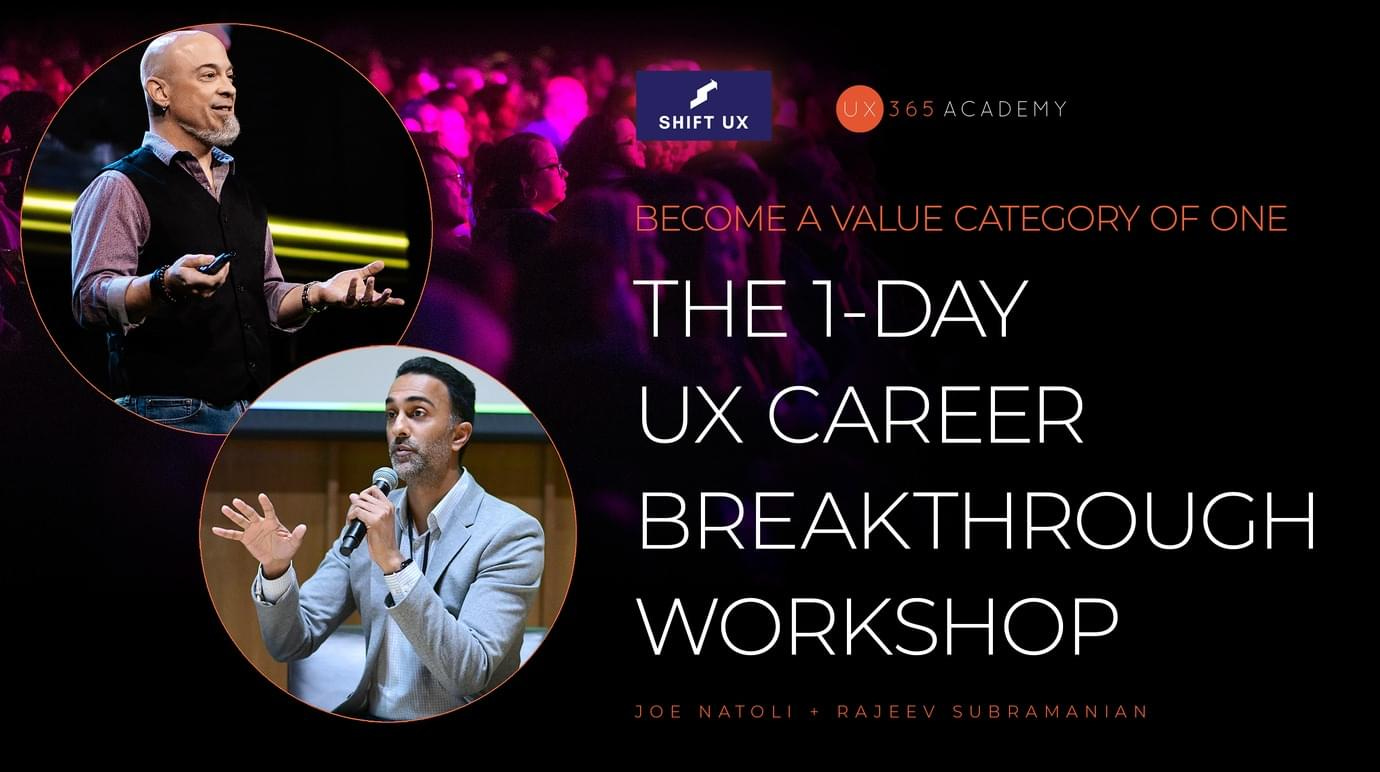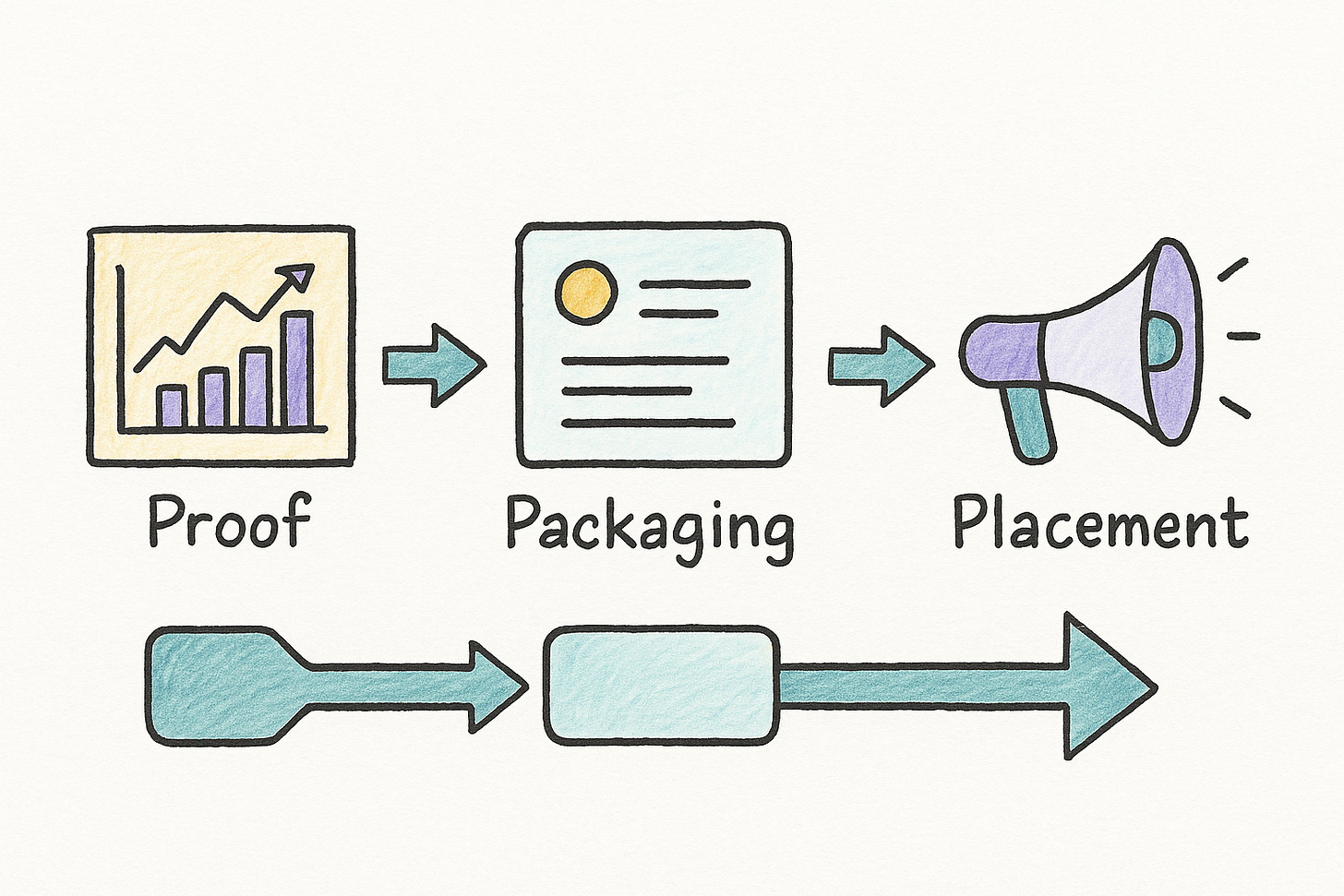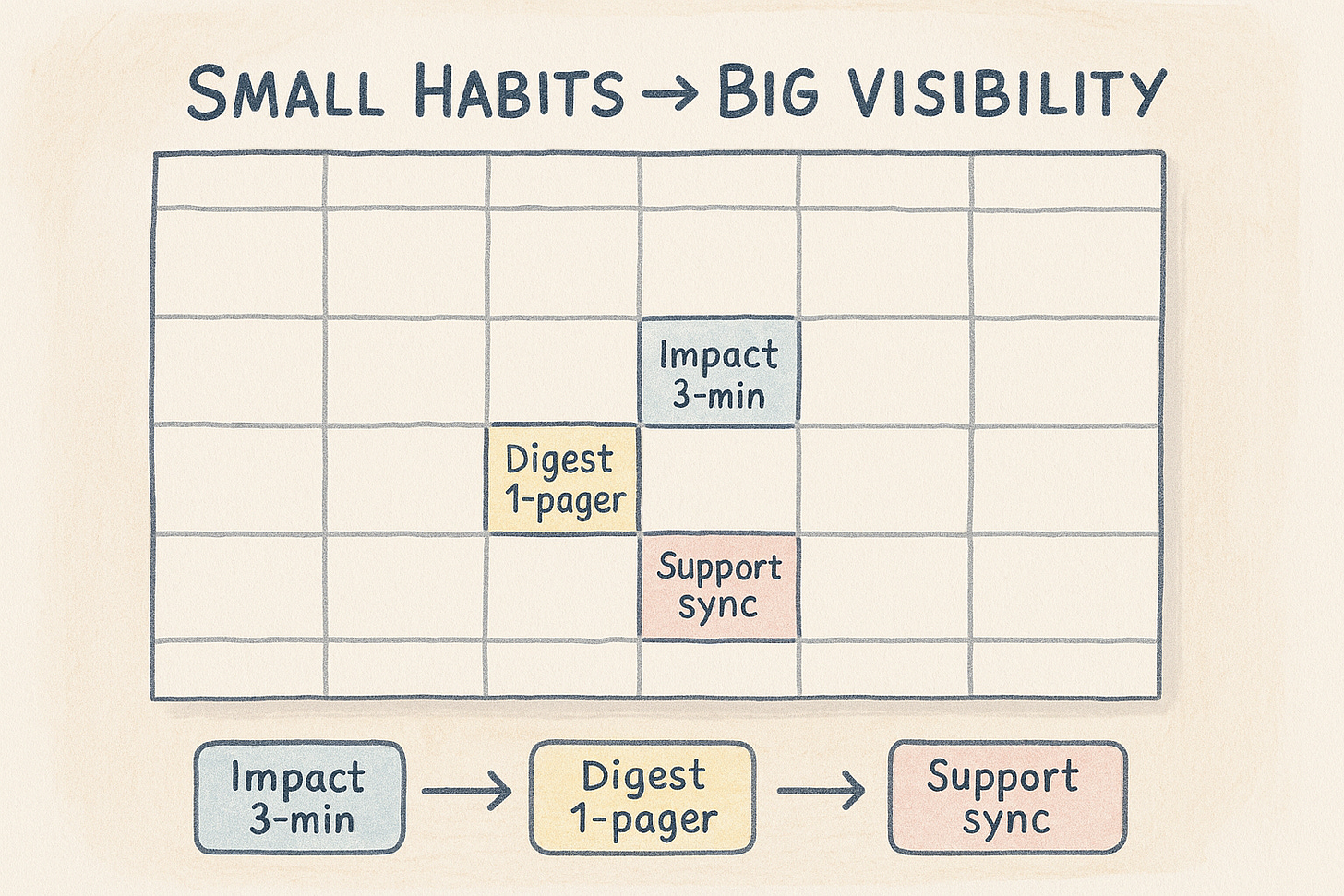Career Visibility: Why Good Work Gets Overlooked
How to make impact visible without becoming self-promotional.
You ship thoughtful flows, clean research, tight prototypes… and still get passed over for the big projects or the promotion. It’s not (only) politics. It’s a visibility problem: the right people aren’t seeing the right proof at the right time.
This guide shows how to package, place, and persist your impact so decision-makers actually notice without feeling fake.
In This Issue
Why Good Work Gets Overlooked
The 5 Signals of Visible Impact
A Simple System: Proof → Packaging → Placement
Concrete Examples (you can copy-paste today)
Stakeholder Routines that Compound Visibility
Common Mistakes (and what to do instead)
Resource Corner
Why Good Work Gets Overlooked
Outputs without outcomes. If leaders only see artifacts (wires, decks) and not results (reduced drop-off, fewer tickets), they undervalue the work. NN/g repeatedly stresses communicating UX in business terms and involving stakeholders early so they understand both the work and its impact. (Source)
Asymmetric attention. Stakeholders are busy; the burden of communication usually falls on UX. If you don’t push updates where they already look, your work stays “in the basement.”
No narrative. Scattered JIRA links ≠ a story. Leaders need a crisp line from problem → decision → outcome to recognize contribution. NN/g’s guidance on explaining UX clearly helps here.
🔧Feeling Stuck in Your UX Career?
Join the 1-Day UX Career Breakthrough Workshop
📍 Live in Alexandria, VA | Nov 22 | Limited to 30 seats
Tired of hitting “Apply” and hearing nothing back? It’s not you, it’s the strategy. In one action-packed day, UX veterans Joe Natoli and Rajeev Subramanian will help you rebuild your career system from the ground up.
✅ Walk out with a rewritten LinkedIn profile
✅ Build a recruiter-magnet personal brand
✅ Practice outreach + interview skills that actually work
✅ Create a 90-day game plan to land the right UX role
🎯 30 spots. One day. A career that works.
back to where we stopped….
The 5 Signals of Visible Impact
Outcome first. Lead with the business result: “Activation +9% after onboarding changes.”
Decision under constraint. Name the tradeoff you made and why it worked.
Before/after evidence. Screenshot, short clip, or metric chart — one visual per claim.
Stakeholder quote. One sentence from PM/Support/CS validating the impact.
Next step. “Now we’ll A/B variant B for high-value cohorts.”
A Simple System: Proof → Packaging → Placement
1) Proof
Collect the evidence as you work: baseline metric, user quote, screenshot of the fix, follow-up metric. Don’t wait until review time.
2) Packaging
Turn each win into a 1-slide or 1-card summary using the five signals above. Weekly roll-ups beat quarterly novellas.
3) Placement
Share where leaders actually look: team Slack/Teams channel, sprint review, roadmap doc, monthly business review. NN/g’s stakeholder-engagement guidance is clear: integrate communication into existing routines, don’t create new ones.
Concrete Examples (copy-paste these)
Slack/Teams update (weekly)
Win: “New error text on card form → payment errors down 18% week-over-week.”
Evidence: 30-sec clip + chart 📎
Next: Testing auto-format for expiry field.
Roadmap doc insert (per quarter)
UX Risk Reduced: Onboarding confusion cut support contacts –22% by clarifying plan differences. Source: CS tickets + 5 user sessions.
Sprint demo script
“Two decisions under constraint:
Kept modal for destructive actions only to protect speed…
Added inline undo for safe actions…
Result: task time –14%, no increase in reversals.”
1:1 with manager
“Here are three impact cards from this month, which one should I scale, and who else should see it?”
Stakeholder Routines that Compound Visibility
Standing 3-minute slot in sprint review for “UX impact this week.”
Monthly impact digest: 5 cards, one page.
Shadow time with Support/CS to translate UX work into ticket reductions and themes.
Invite stakeholders into research so they feel problems, not just read about them, a proven tactic to gain buy-in.
Common Mistakes (and what to do instead)
Mistake: Sharing artifacts without outcomes.
Instead: Tie every share to a metric, quote, or before/after.Mistake: Waiting for the perfect case study.
Instead: Publish micro-stories weekly; compile later.Mistake: Broadcasting in channels leaders don’t read.
Instead: Ask, “Where do decisions happen?” Put your proof there.Mistake: Evangelizing UX in abstract.
Instead: Evangelize specific wins and change the story over time, classic usability evangelism advice.
Resource Corner
All links below are verified and working:
NN/g — UX Careers: What a UX Career Looks Like Today
https://www.nngroup.com/articles/evangelizing-usability/ Nielsen Norman GroupNikki Anderson — Blog (practical communication + career advice)
Final Thought
Visibility isn’t vanity. It’s organizational memory, the way your team learns what works and why it matters. Package your wins, place them where decisions happen, and persist week after week.
Do the work… then let the work be seen.







